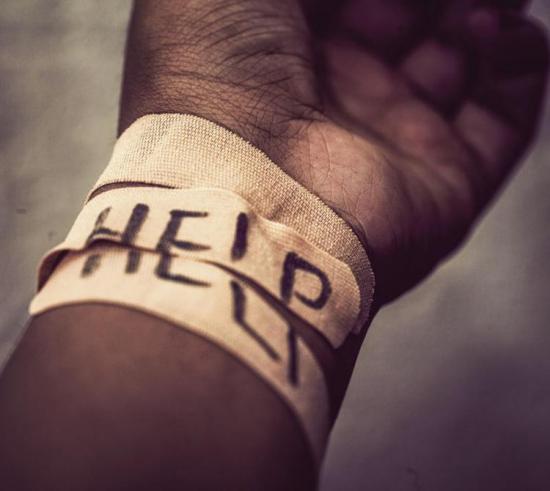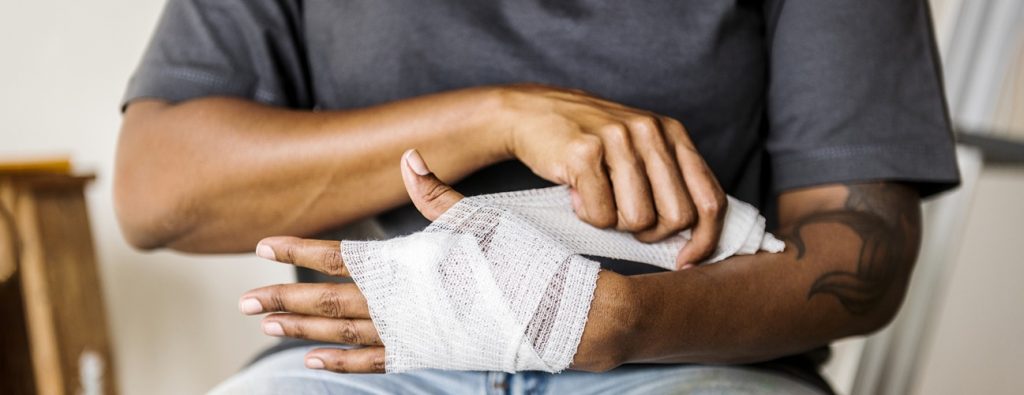
Non-Suicidal Self-Injury (NSSI), commonly referred to as self-injury or self-harm, may be confusing and difficult to understand. Many people have a hard time talking about self- injury because it seems unnatural to them. It is important to understand what motivates someone to harm themselves because not all people do it for the same reason. The best way to help someone to stop self- injuring is to help them address the underlying issues.
When someone self-injures, they do not intend to die. People who self-injure may do so as a method to cope with stress– hurting themselves is often seen as a way to control their upsetting feelings. Others do so to dissociate from their problems (e.g. to distract themselves from emotional pain). Research suggests that self-injury can activate different chemicals in the brain which relieve emotional turmoil for a short period of time. Self-injury or self-harm is usually a response to severe emotional distress. A person may cause intentional, non-suicidal injuries to his or her body as a way to mirror psychological pain with emotional pain.

In some cases, the physical injury can have a temporary calming effect and, in others, a self-inflicted wound is a way to “feel something” to deal with emotional numbness. Other motivations for why someone may self-injure include:
- To reduce anxiety/tension
- To reduce sadness and loneliness
- To alleviate angry feelings
- To punish oneself due to self-hatred
- To get help from or show distress to others
- To escape feelings of numbness (e.g. to feel something)

Self-injury, also known as self-harm, self-mutilation, or self-abuse occurs when someone intentionally and repeatedly harms themselves in a way that is impulsive and not intended to be lethal. The most common methods are:
- Skin cutting (70-90%),
- Head banging or hitting (21%-44%), and
- Burning (15%-35%).
Other forms of self-injury include excessive scratching to the point of drawing blood, punching self or objects, infecting oneself, inserting objects into body openings, drinking something harmful (like bleach or detergent), and breaking bones purposefully. Most individuals who engage in non-suicidal self-injury (NSSI) hurt themselves in more than one way. A variety of treatment options exist for people who self-injure. Determining which course of action is appropriate for each individual should be done with the guidance of a trained health professional.

Treatment options for people who self-injure may include one (or a combination) of the following:
- Psychological Treatments: Psychotherapy or “talk therapy” works by helping your brain better control your thoughts and emotions. There are two different types of psychotherapy that have been found to be effective for treating self-injury:
- Dialectical Behavior Therapy (DBT), a type of therapy based on a philosophy of balancing, acceptance and change.
- Cognitive Behavior Therapy (CBT), a type of therapy which helps people understand, problem solve, and change the relationship between their thoughts, emotions, and behaviors.

- Medication: Medication may be used for people who have symptoms of Depression and/or Anxiety along with their self-injury behaviors. Rather than treating the self-injury directly, medication helps with the underlying issues that are contributing to why someone chooses to self-injure. For more information on how to properly use medications, check out MedEd.
- School Supports: Sometimes certain adaptations can be made by the school to assist a student in coping with and managing their self-injury.
- Regular Routine: Maintaining a healthy, regular daily routine is very important for someone who is struggling with mental health issues. For help maintaining the kind of healthy lifestyle that should accompany professional treatment, check out taking charge of your Health.
How Common Is Self-Harm?

Self-harm is much more common than most people realize. Among teenagers, an estimated 15 percent will experience some form of self-harm. It drops to 4 percent among adults. The most common forms of self-injury include:
- Skin cutting 70% to 90%
- Headbanging or hitting 21% to 44%
- Flesh burning 15% to 35%
One reason for the lack of awareness around the condition of self-harm is that a person can easily hide or explain away their injuries.
What Are the Signs of Self Injury?

For family and friends, especially those who have loved ones suffering some type of mental illness, it’s important to watch for patterns and signs of self-injury which can include:
- Arms, legs or other parts of the body that show signs of repetitive injuries, such as scabs, bruises, burns and cuts
- Overdressing in warm weather, wearing, for example, coats, long sleeve shirts or pants
- Repeatedly making excuses for why or how they got injured
- Avoidance, isolation, and withdrawal from activities and relationships they previously had enjoyed
The overwhelming majority self-injury cases – some 90 percent – begin in adolescence. While the condition brings temporary relief for a person suffering, it carries a lot of shame and stigma.
How Can You Be Supportive?

When helping a person through the trauma of self-injury, it is important to listen, and not judge or act disgusted. You can stay supportive and proactive, drive him/her to a counselor’s appointment or visit him/her in treatment when appropriate. Take the opportunity to educate yourself about the condition as well as the underlying causes that often lead to these behaviors.
Self-injury Awareness Month is a chance to set aside stigma, understand the problem and be open about recovery and mental health. Unfortunately, too many people will suffer needlessly because they’re afraid of being judged.
Teenagers are especially vulnerable and often believe they’re the only ones in the world coping with these types of issues. With the right treatment and support, self-injury can be removed from a person’s life and appropriate ways to cope can be implemented.

Destinations provide premier teen treatment designed to support the whole family throughout the healing journey. Our goal is to service teens in need. We do so by providing compassionate, individualized pathways to obtaining therapeutic support and comprehensive educational services. We use various resources to ultimately achieve long-term, sustainable well-being.

